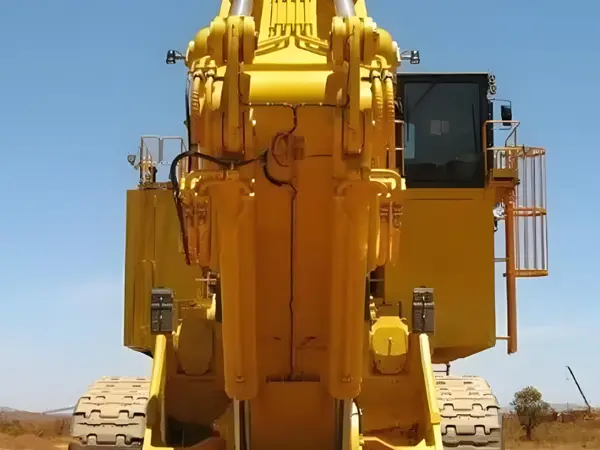Understanding Hydraulic Diggers: A Comprehensive Guide for Professionals in the Construction Machinery Sector
Release time:
2025-03-22
Hydraulic diggers, also known as excavators, are indispensable machines in the construction and engineering sectors. These powerful machines are designed to perform various tasks, including digging, lifting, and transporting materials. Understanding the mechanics and advantages of hydraulic diggers is essential for professionals involved in the manufacturing and processing of construction machiner
Hydraulic diggers, also known as excavators, are indispensable machines in the construction and engineering sectors. These powerful machines are designed to perform various tasks, including digging, lifting, and transporting materials. Understanding the mechanics and advantages of hydraulic diggers is essential for professionals involved in the manufacturing and processing of construction machinery.
At the heart of hydraulic diggers is the hydraulic system, which utilizes fluid power to create movement. This system allows for precise control of the digger's arm and bucket, enabling operators to carry out complex tasks with ease. One of the main advantages of hydraulic diggers is their versatility; they can be equipped with different attachments such as buckets, augers, and breakers, making them suitable for a wide range of applications from site preparation to demolition.
When selecting a hydraulic digger for a specific project, several factors should be taken into account. Firstly, the size and weight of the machine play a crucial role. A larger digger may be needed for heavy-duty tasks, but it can also make transportation and maneuverability more challenging. Conversely, smaller diggers are easier to transport but may not be suitable for more demanding jobs.
Another consideration is the digger's operating environment. Factors such as soil type, space limitations, and weather conditions can affect the performance and efficiency of a hydraulic digger. For example, softer soils may require a different type of bucket or attachment compared to harder, rockier terrains. Additionally, the operator’s skill level can significantly influence the machine's effectiveness—investing time in training and familiarization can maximize productivity.
Maintenance is another critical aspect of hydraulic diggers. Regular checks and servicing are essential to ensure the longevity and reliability of these machines. Key maintenance practices include checking hydraulic fluid levels, inspecting hoses and connections for wear, and ensuring that moving parts are lubricated. By adhering to a consistent maintenance schedule, professionals can avoid costly downtime and repairs.
In recent years, technological advancements have led to the development of more efficient and environmentally friendly hydraulic diggers. Innovations such as telematics systems allow for real-time monitoring of machine performance, leading to improved productivity and reduced fuel consumption. As the industry continues to evolve, staying informed about these advancements can provide a competitive edge for professionals.
In summary, hydraulic diggers are vital assets in the engineering and construction machinery industry. By understanding their functionalities, selecting the appropriate model for specific tasks, and adhering to maintenance best practices, professionals can enhance their operational efficiency and project outcomes. Embracing new technologies and ongoing training will further ensure success in utilizing hydraulic diggers effectively in various applications.
At the heart of hydraulic diggers is the hydraulic system, which utilizes fluid power to create movement. This system allows for precise control of the digger's arm and bucket, enabling operators to carry out complex tasks with ease. One of the main advantages of hydraulic diggers is their versatility; they can be equipped with different attachments such as buckets, augers, and breakers, making them suitable for a wide range of applications from site preparation to demolition.
When selecting a hydraulic digger for a specific project, several factors should be taken into account. Firstly, the size and weight of the machine play a crucial role. A larger digger may be needed for heavy-duty tasks, but it can also make transportation and maneuverability more challenging. Conversely, smaller diggers are easier to transport but may not be suitable for more demanding jobs.
Another consideration is the digger's operating environment. Factors such as soil type, space limitations, and weather conditions can affect the performance and efficiency of a hydraulic digger. For example, softer soils may require a different type of bucket or attachment compared to harder, rockier terrains. Additionally, the operator’s skill level can significantly influence the machine's effectiveness—investing time in training and familiarization can maximize productivity.
Maintenance is another critical aspect of hydraulic diggers. Regular checks and servicing are essential to ensure the longevity and reliability of these machines. Key maintenance practices include checking hydraulic fluid levels, inspecting hoses and connections for wear, and ensuring that moving parts are lubricated. By adhering to a consistent maintenance schedule, professionals can avoid costly downtime and repairs.
In recent years, technological advancements have led to the development of more efficient and environmentally friendly hydraulic diggers. Innovations such as telematics systems allow for real-time monitoring of machine performance, leading to improved productivity and reduced fuel consumption. As the industry continues to evolve, staying informed about these advancements can provide a competitive edge for professionals.
In summary, hydraulic diggers are vital assets in the engineering and construction machinery industry. By understanding their functionalities, selecting the appropriate model for specific tasks, and adhering to maintenance best practices, professionals can enhance their operational efficiency and project outcomes. Embracing new technologies and ongoing training will further ensure success in utilizing hydraulic diggers effectively in various applications.





